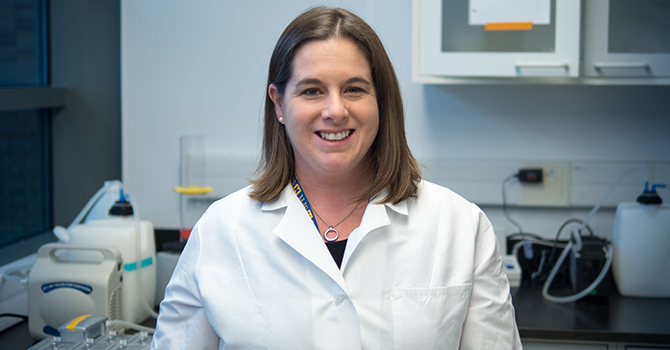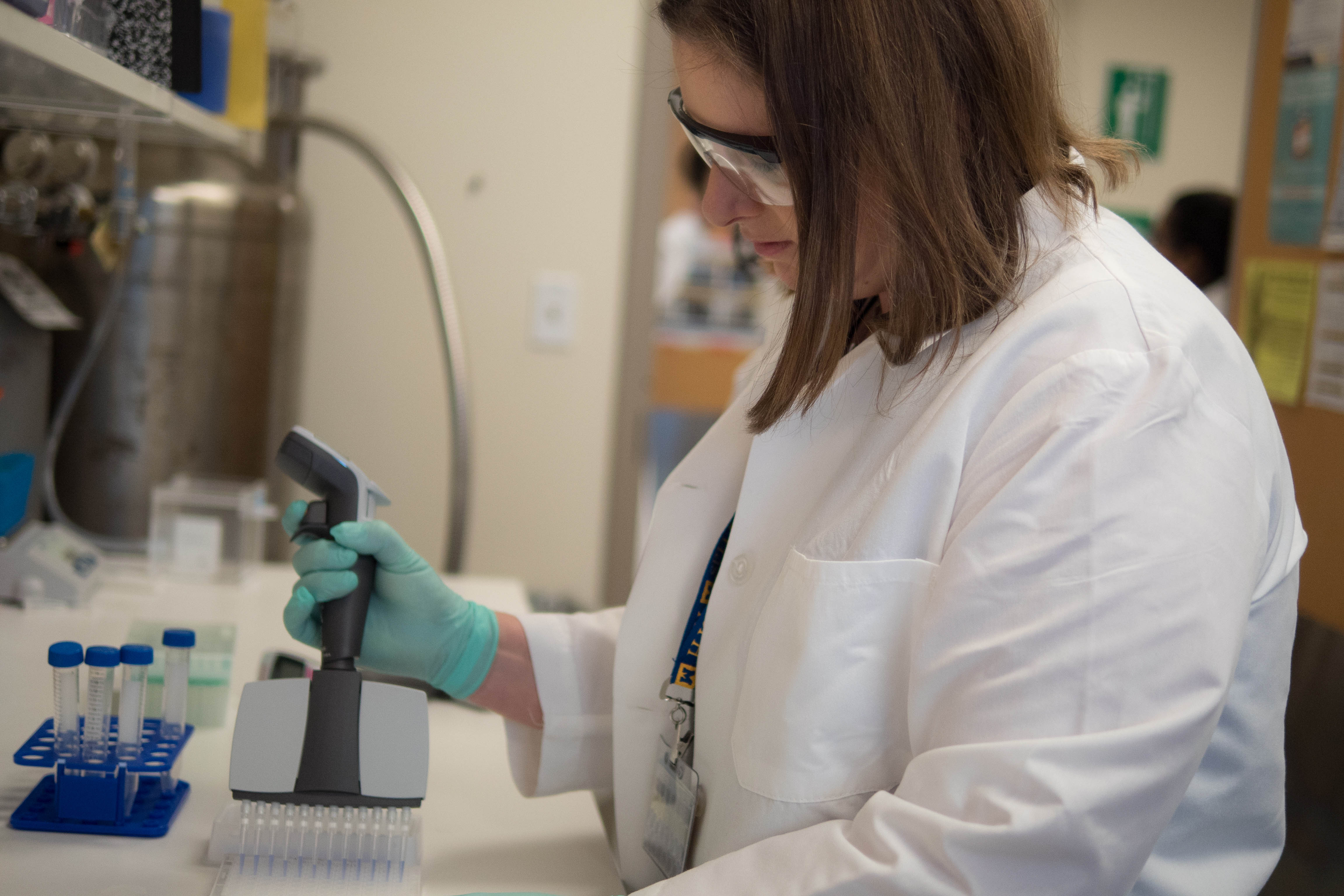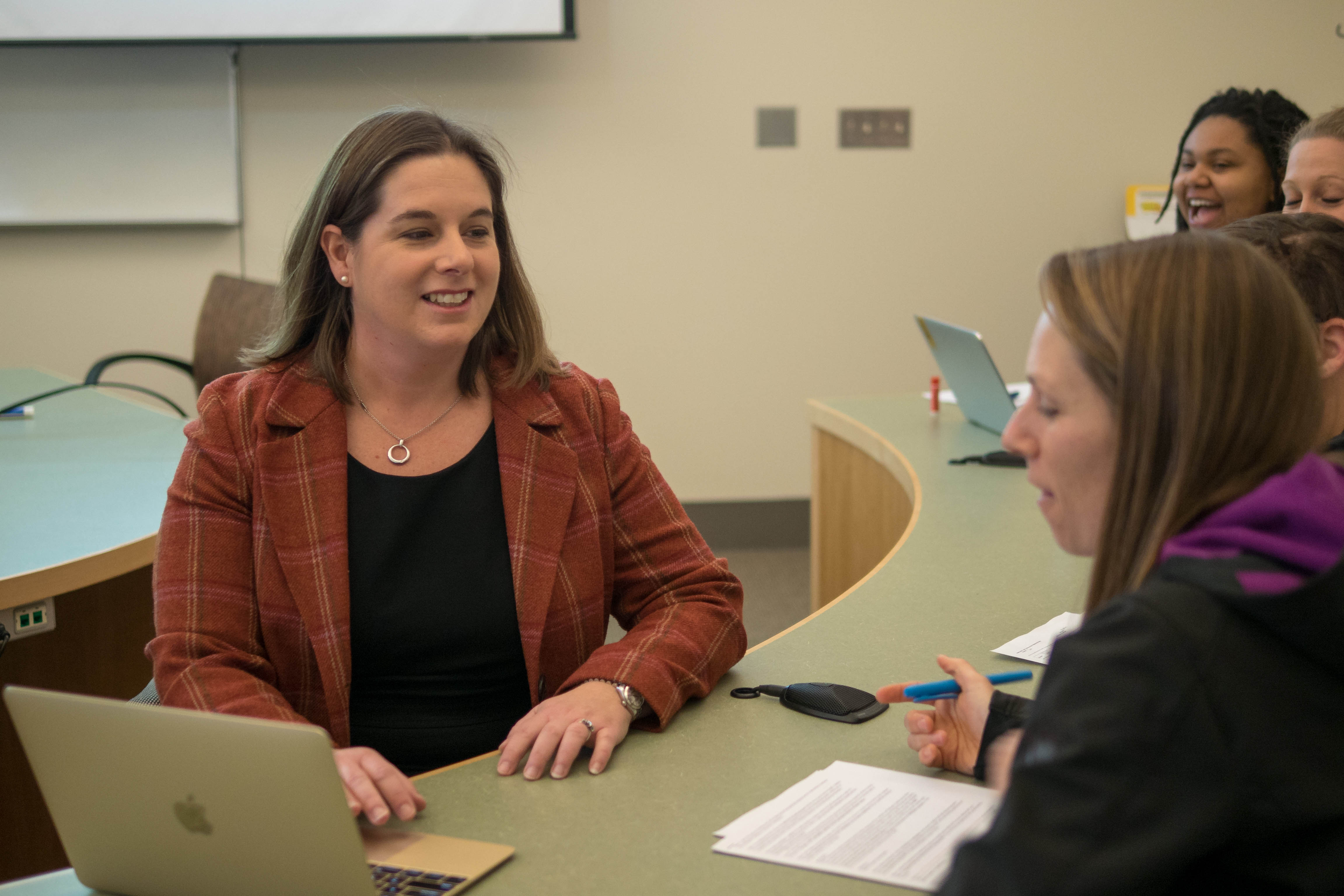Professor’s Path to Environmental Epigenetics—and How It Helped Shape the Field

Dana Dolinoy
Professor and NSF International Chair of Environmental Health Sciences
Dana Dolinoy's interest in public health began when she was 18 years old. After spending her teenage years in Atlanta, her parents moved back to the exact same house in Southern California where Dolinoy spent the first 10 years of her life.
"I had such fond memories of my early childhood in California," she says. "We had free reign. We lived near the beach, so we could run to the water. And we'd look for crabs on the side of the docks."
But being back in their old home, Dolinoy noticed everything was different. There were no crabs. She couldn't jump in the water because of oil deposits. The beach had eroded.
"That's when I began to connect the environment with health," says Dolinoy, who is a professor and the NSF International Chair of Environmental Health Sciences at the University of Michigan School of Public Health.
The Mice That Changed Her Life
Those lessons near the water inspired her to study environmental health sciences and policy at Duke University, where she worked with her advisor and mentor, Marie Lynn Miranda, on a research project focused on environmental justice in childhood lead poisoning.
After undergrad, Dolinoy wanted to focus on how the environment impacts health and work in a participatory, inclusive environment, so she decided to pursue a graduate degree in public health. She went to Harvard for her master's degree and returned to Duke for her PhD.
At Duke, she intended to work with Miranda again, but a required research rotation led her down a different path.
"At the time there was a lot of media attention being given to these obese yellow mice and slim brown mice," she says, referring to the now-famous agouti mice. "I had never worked with animal models before, but it piqued my curiosity, so I emailed the professor, Randy Jirtle. He called me back and invited me to lunch. I ended up switching my whole trajectory."
The agouti mice are genetically identical mice whose agouti gene can be activated or suppressed by the epigenome, which Dolinoy describes as "the instruction book that sits on top of your genome and tells your genes how to act." A fully activated agouti gene produces a yellow mouse that is prone to obesity and other health issues. A non-activated agouti gene produces a slim and healthy brown mouse.
"I realized what those agouti mice represent," Dolinoy says. "They are a visual biosensor for the environment—including things like diet and toxicants—and how environmental factors can have a profound effect on health. I decided I needed to understand and study that more."

Tools to Improve Human Health
Dolinoy is still studying environmental epigenomics and the agouti mice at Michigan Public Health.
"A lot of public health work is identifying biomarkers that predict disease risk. For my first several years at the University of Michigan, we'd been doing that work with mouse models. But a few years ago I thought, 'We're generating all this data on how the environment impacts the epigenome, but what are we going to do about it?'"
That's where Dolinoy's latest research comes in. She and her team have begun developing refined and targeted tools to alter the epigenome at a precise location and potentially suppress a gene that shouldn't be turned on. For example, in the agouti mice, suppressing the agouti gene turns an obese yellow mouse into a slim brown mouse. In cancer cells, suppressing the oncogenes can prevent cancer from spreading.
Over the course of her career, Dolinoy has grappled with the ethics of using animal models in research.
"We think very carefully about when and why we choose to use animal models and the ethics that go into that," she says. "A lot of consideration goes into this, and I feel comfortable with the reasons that we use a mouse model. A lot of our work has been translated to humans—and we can see the considerable potential it has for human health."
Putting Environmental Epigenetics on the Map
Environmental epigenetics has only been around for about 15 years, and Dolinoy's work has been instrumental to defining the field and putting it on the map.
"I feel like it was a combination of timing and luck—that I started grad school at the time these mice were becoming famous, and I got to start on this path," she says. "It's been really rewarding to see it unfold and be part of that."
Bringing this field to life has also come with significant responsibilities.
"It takes a lot of attention to detail to make sure you establish a field in a way that's not going to roll back and become insignificant," she says. "Our work has opened up minds at the NIH and even at chemical companies that environmental epigenetics is a bona fide thing and that they really need to care about it. And now there are top public health schools recruiting professors in epigenetics."
 Bringing People Together through Collaboration and Teaching
Bringing People Together through Collaboration and Teaching
Her groundbreaking work in environmental epigenetics has opened up countless opportunities for collaboration within public health and beyond. And those collaborations are among Dolinoy's favorite things about working at the University of Michigan. "The barrier to collaboration is low here—it's so collegial and Midwestern," she says.
One such project is the University of Michigan's Children's Environmental Health and Disease Prevention Center, which is funded by the NIH and EPA. Since 2009, Karen E. Peterson, professor and chair of the Nutritional Sciences department; John Meeker, professor of environmental health sciences and senior associate dean for research; and Dolinoy have been working on independent but interconnected projects around the environment and children's health.
While Peterson and Meeker work with human birth cohorts, Dolinoy works with a mouse model. They often apply what she learns with the mouse model to the human cohorts.
Teaching and mentoring young scientists is another highlight for Dolinoy.
"It's very important to me to work in an atmosphere where I can combine didactic teaching in the classroom with non-didactic teaching in the laboratory—and I was able to find that here at the School of Public Health. You get to create this family of people, and it is just amazing to see where their careers go."
Dolinoy is a big believer in building relationships with students, colleagues, and collaborators, and she instills that in her students.
"You can't become a scientist and only do science in the lab or in the field," she says. "You also have to form relationships. You have to join the kickball team. You have to go out and celebrate someone's defense. These relationships that are outside the lab—they come back and feed back into the productivity that happens in the lab."
- Learn more about Environmental Health Sciences at Michigan Public Health.
- Interested in public health? Learn more here.
